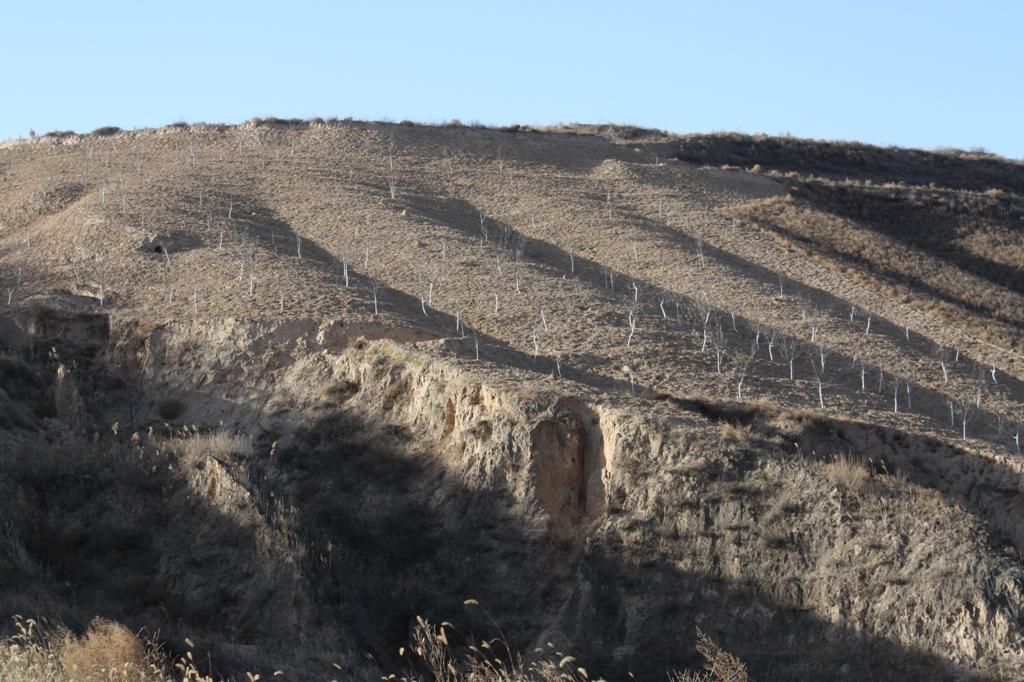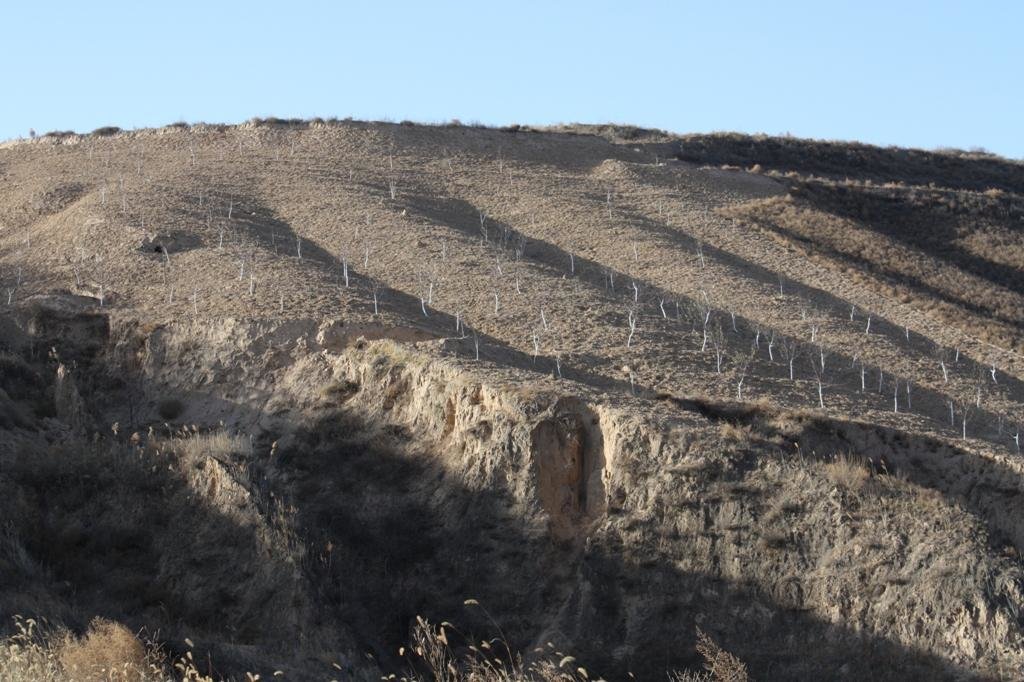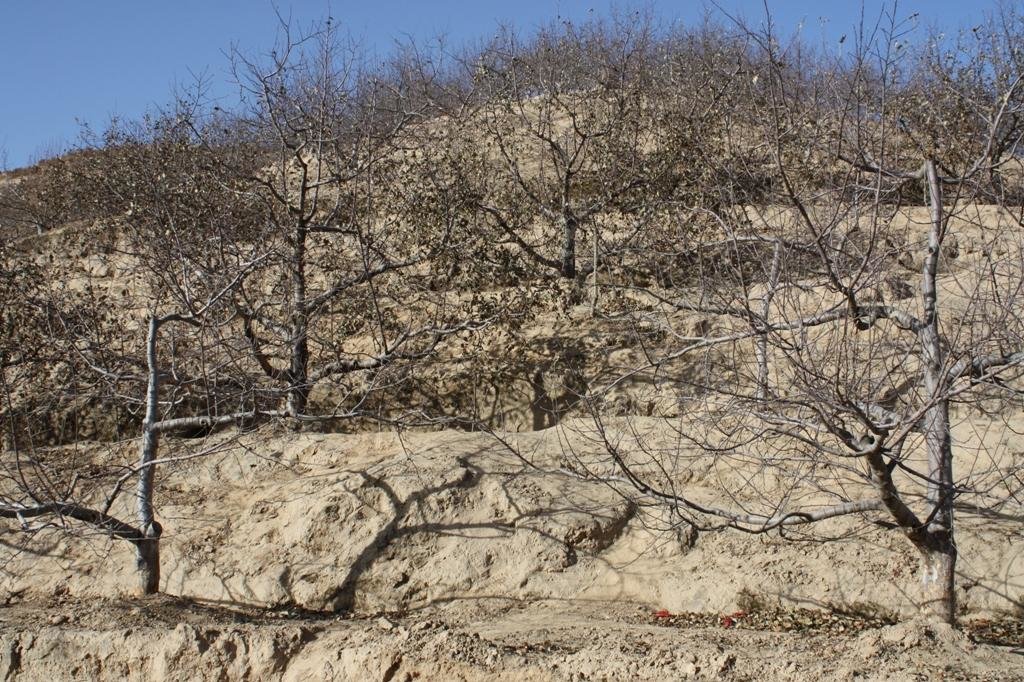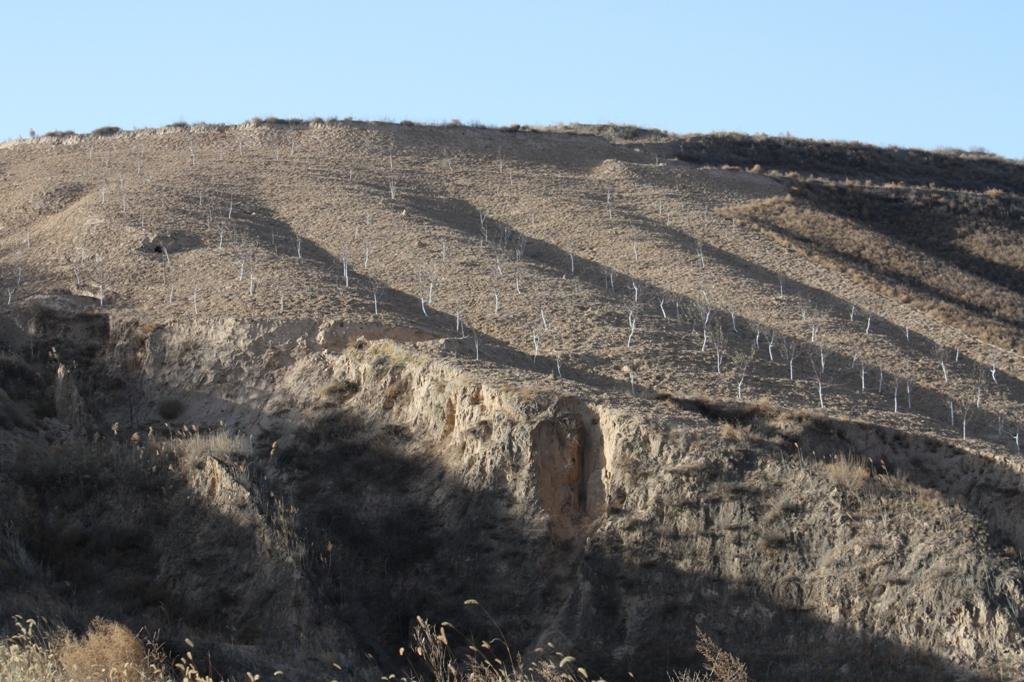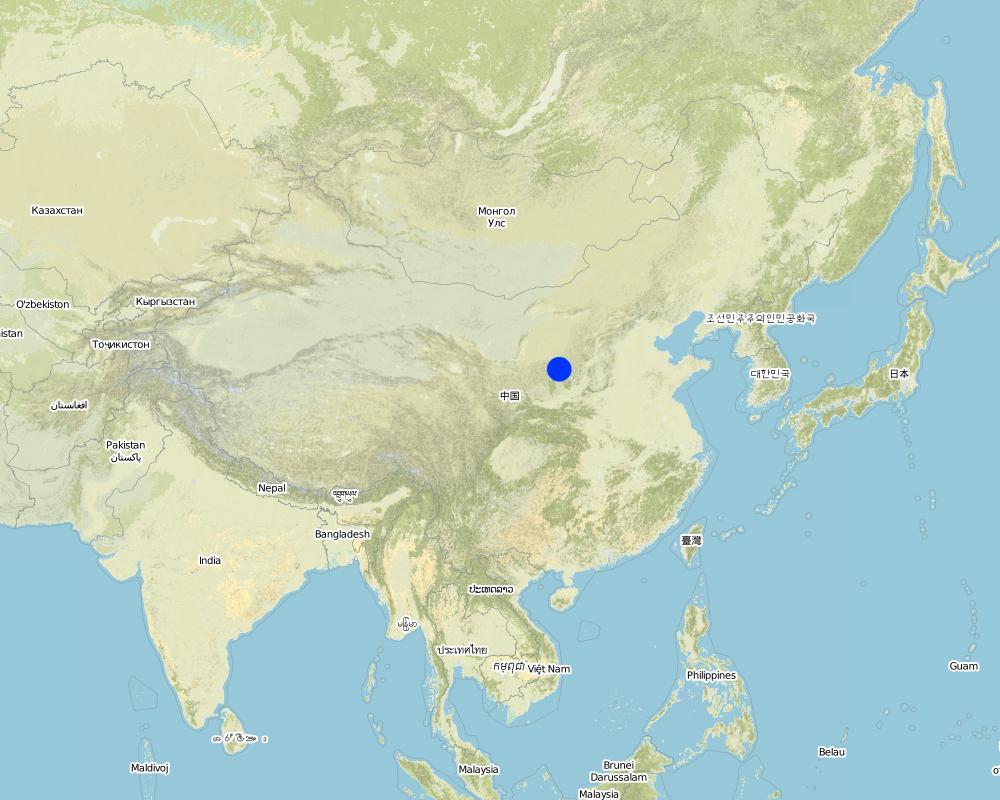Fulfilling of Year-after-year terraced land [China]
- Creation:
- Update:
- Compiler: Fei WANG
- Editor: –
- Reviewer: David Streiff
逐年扩盘的实施
approaches_2659 - China
View sections
Expand all Collapse all1. General information
1.2 Contact details of resource persons and institutions involved in the assessment and documentation of the Approach
Name of the institution(s) which facilitated the documentation/ evaluation of the Approach (if relevant)
Northwest A&F University (NWAFU) - China1.3 Conditions regarding the use of data documented through WOCAT
The compiler and key resource person(s) accept the conditions regarding the use of data documented through WOCAT:
Yes
2. Description of the SLM Approach
2.1 Short description of the Approach
Year-after-year terraced land is a kind of practice to enlarge the flat land step by step with the growing up of new planted trees in order to reduce runoff generation and improve the water moisture of the soil and the yield as well.
2.2 Detailed description of the Approach
Detailed description of the Approach:
Aims / objectives: The main aim of the approach is to improve the soil moisture by change of the slope into flat land; The special character is the process of terracing land. Starting with small pit for the young and small trees, continuing to expand the area of terraces untill the land is well conserved. The small trees have small pits and flat land, and the bigger trees have larger areas.
Stages of implementation: The work is finished in several years which could alleviate conflicts between land preparation and crop management. The approach will be finished by the local farmers.
2.3 Photos of the Approach
2.5 Country/ region/ locations where the Approach has been applied
Country:
China
Region/ State/ Province:
Yan'an City, Shaanxi Province
Further specification of location:
Miaowan Village, Ansai County
Comments:
The whole area of this watershed is about 7.5 km2. There are a lot of orchards (mostly apple) in this watershed. It is one of typical watershed with specially soil erosion problem even the coverage of plants is quite high. The local farmers like to get rid of all the grass and shrub under the trees to protect the living condition of trees. The traditional soil erosion method here is to expand
Map
×2.6 Dates of initiation and termination of the Approach
Indicate year of initiation:
1975
Year of termination (if Approach is no longer applied):
1980
2.7 Type of Approach
- traditional/ indigenous
2.8 Main aims/ objectives of the Approach
The Approach focused on SLM only
to describe the character and the process of this approach.
The SLM Approach addressed the following problems: frequent drought; low crop yield on slopes; low income from the land; strong soil erosion.
2.9 Conditions enabling or hindering implementation of the Technology/ Technologies applied under the Approach
availability/ access to financial resources and services
- hindering
the local farmers have no money to pay for the land construction
Treatment through the SLM Approach:
legal framework (land tenure, land and water use rights)
- enabling
The existing land ownership, land use rights / water rights moderately helped the approach implementation: the local farmers like the approach and they implement it.
workload, availability of manpower
- hindering
the time and labour is very limited. It is not possible to finish it in a short time
Treatment through the SLM Approach:
other
- hindering
in some region, it is difficult to build terraces because the slope is quite steep, this approach is useful for orchards
Treatment through the SLM Approach:
3. Participation and roles of stakeholders involved
3.1 Stakeholders involved in the Approach and their roles
- local land users/ local communities
Local farmers
The work is hard labour work for women. The approach is mainly finished by man and some strong women.
It is finished by the local farmer themselves
Sometimes the local farmers are self-organized, worked together and constructed the terrace together
3.2 Involvement of local land users/ local communities in the different phases of the Approach
| Involvement of local land users/ local communities | Specify who was involved and describe activities | |
|---|---|---|
| initiation/ motivation | self-mobilization | local farmers |
| planning | none | According to their time with no planning mainly |
| implementation | self-mobilization | local farmers |
| monitoring/ evaluation | none | |
| Research | none |
3.3 Flow chart (if available)
Description:
The organization chart of year-after-year terraced land
Author:
Wang Fei (ISWC,CAS, Yangling, China)
3.4 Decision-making on the selection of SLM Technology/ Technologies
Specify who decided on the selection of the Technology/ Technologies to be implemented:
- land users alone (self-initiative)
Explain:
it is a kind of practice fully finished by local farmers.
Decisions on the method of implementing the SLM Technology were made by by land users* alone (self-initiative / bottom-up). the local farmers want to improve the soil condition and yield of orchard, and sometime is for better working condition.
4. Technical support, capacity building, and knowledge management
4.1 Capacity building/ training
Was training provided to land users/ other stakeholders?
No
4.2 Advisory service
Do land users have access to an advisory service?
Yes
Describe/ comments:
Advisory service is totally inadequate to ensure the continuation of land conservation activities; The local government does not pay attention to such approach because the labor cost is very high.
4.4 Monitoring and evaluation
Is monitoring and evaluation part of the Approach?
Yes
Comments:
technical aspects were regular monitored by land users through observations; indicators: It is not difficult to master the technology.
There were few changes in the Approach as a result of monitoring and evaluation: Only some farmers plan to use this technology when they know the benefits.
There were no changes in the Technology as a result of monitoring and evaluation: It is a very simple and traditional method.
5. Financing and external material support
5.1 Annual budget for the SLM component of the Approach
If precise annual budget is not known, indicate range:
- < 2,000
Comments (e.g. main sources of funding/ major donors):
Approach costs were met by the following donors: local community / land user(s) (without external input): 100.0%
5.2 Financial/ material support provided to land users
Did land users receive financial/ material support for implementing the Technology/ Technologies?
No
5.4 Credit
Was credit provided under the Approach for SLM activities?
No
6. Impact analysis and concluding statements
6.1 Impacts of the Approach
Did the Approach help land users to implement and maintain SLM Technologies?
- No
- Yes, little
- Yes, moderately
- Yes, greatly
The construction should improve the agricultural condition becasue it could reduce soil erosion, runoff and improve soil moisture.
Did the Approach empower socially and economically disadvantaged groups?
- No
- Yes, little
- Yes, moderately
- Yes, greatly
the approach need a lot of labour without external input. Another reason is that the work in orchard is also hard. There is very little influence to the socially and economically disadvantage groups.
Did the Approach improve issues of land tenure/ user rights that hindered implementation of SLM Technologies?
- No
- Yes, little
- Yes, moderately
- Yes, greatly
The problem is likely to be overcome in the near future. It is difficult to find the problem induced by this approach.
Did other land users / projects adopt the Approach?
- No
- Yes, little
- Yes, moderately
- Yes, greatly
Most of the farmers to adapt this approach before, but recently, the income of part time work in the town increased and less farmers implement this approach consequently .
Did the Approach lead to improved livelihoods / human well-being?
- No
- Yes, little
- Yes, moderately
- Yes, greatly
The yield and the income increased. The income increased more significantly in larger households
Did the Approach help to alleviate poverty?
- No
- Yes, little
- Yes, moderately
- Yes, greatly
The yield and the income increased. The income increased more significantly in larger households
6.2 Main motivation of land users to implement SLM
- increased production
higher production in arid and semiarid areas
6.3 Sustainability of Approach activities
Can the land users sustain what has been implemented through the Approach (without external support)?
- yes
If yes, describe how:
it depends on the time of local farmers. If the requirement of part time work decline, more people will continue this approach
6.4 Strengths/ advantages of the Approach
| Strengths/ advantages/ opportunities in the land user’s view |
|---|
| It is good approach to improve soil condition and yield (How to sustain/ enhance this strength: The more imcome or stable imcome could encourage them to do so) |
| Strengths/ advantages/ opportunities in the compiler’s or other key resource person’s view |
|---|
| The work is according to the local farmer themselves (How to sustain/ enhance this strength: If they want, they can do it consciously ) |
6.5 Weaknesses/ disadvantages of the Approach and ways of overcoming them
| Weaknesses/ disadvantages/ risks in the land user’s view | How can they be overcome? |
|---|---|
| lots of labour work is needed | waiting for the spare time, or neglect the approach if the yield is already decent. |
| Weaknesses/ disadvantages/ risks in the compiler’s or other key resource person’s view | How can they be overcome? |
|---|---|
| high amount of labor is required for the implementation | self-organized labour sharing to build the terraces.d if the return from land is higher than that from labour work it has to be distributed fair. |
| limition of financial support for the implementation | find external support |
7. References and links
7.1 Methods/ sources of information
- field visits, field surveys
Links and modules
Expand all Collapse allLinks
No links
Modules
No modules


